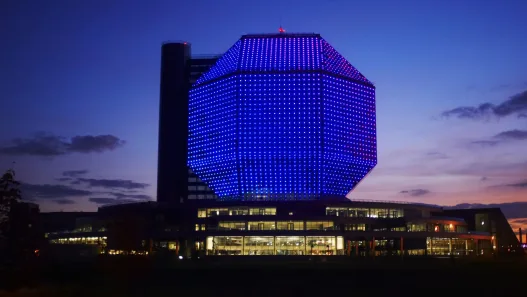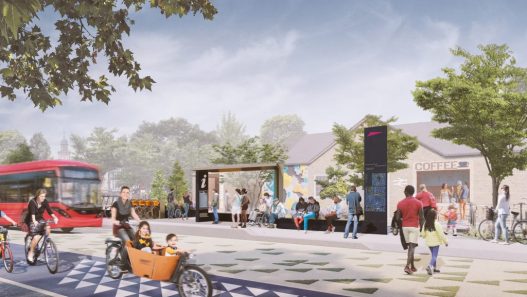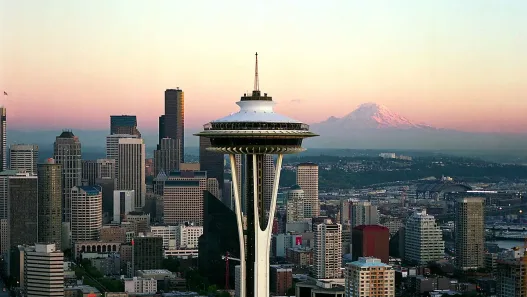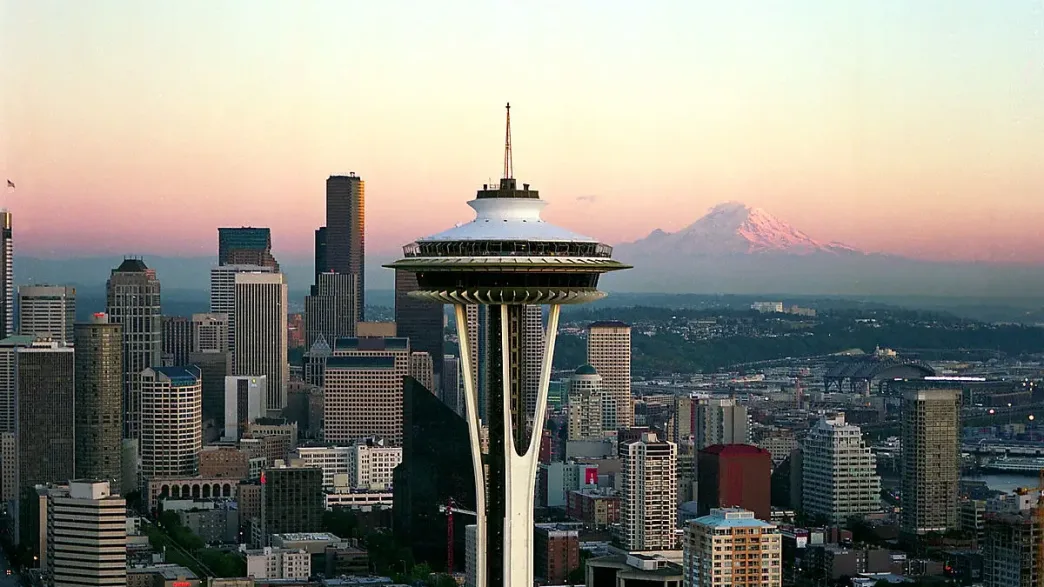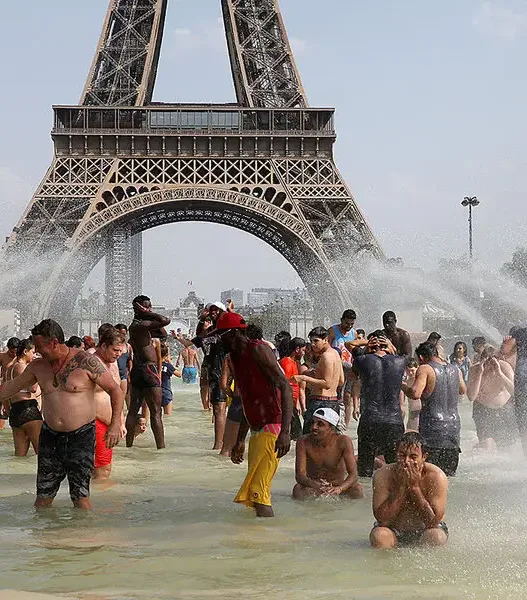Global fairs, often referred to as world fairs or international exhibitions, serve as grand showcases of human achievement, culture, and innovation. These events invite nations from around the world to present their advances in technology, art, and society, encouraging a spirit of cooperation and competition. The architecture created for these exhibitions is not merely functional; it embodies the aspirations and identities of the nations involved, leaving legacies that can shape urban landscapes and cultural perceptions for generations to come.

Definition and Purpose
Global expos are essentially organized events designed to highlight the achievements of nations and encourage cultural exchange. They often feature pavilions representing different countries, each showcasing their unique contributions to a variety of fields, from science and technology to art and cuisine. The purpose of these expos goes beyond mere exhibition; they aim to educate the public, inspire innovation, and foster international connections. By bringing together different cultures in one place, these events foster dialogue and understanding between nations.
Historical Context
The tradition of global fairs dates back to the mid-19th century, with the first recognized world's fair held in London in 1851. This event, known as the Great Exhibition, showcased the industrial advances of the era and marked a significant moment in history when countries began to celebrate their achievements on a global stage. Over the decades, the concept evolved to reflect changing social, political, and technological landscapes. Each exhibition not only highlighted the achievements of the time, but also responded to pressing issues of the day, such as the effects of industrialization, globalization, and even war.
The Evolution of Exhibitions
As the world has changed, so have global fairs. Initially focused on industrial progress, fairs have expanded to encompass a broader range of themes, including culture, sustainability, and innovation. In the 20th century, fairs such as the Montreal Expo, which emphasized the theme of "Tomorrow's World," and the Hanover Expo, which focused on "People, Nature, and Technology," were held. Each fair reflects the spirit of its time, adapting to contemporary challenges and opportunities. The evolution of these events highlights the dynamic relationship between architecture, culture, and society.
The Importance of Architecture in Exhibitions
Architecture plays a crucial role in the identity and impact of global exhibitions. The structures built for these events often become iconic symbols of the countries they represent. For example, the Eiffel Tower, originally built for the Exposition Universelle in Paris, has become an enduring symbol of France. These architectural achievements are not only visually striking; they often incorporate innovative technologies and sustainable practices that set trends for future building designs. The temporary nature of many exhibition structures encourages experimentation and creativity, allowing architects to push the boundaries of traditional design.
Overview of Major Fairs
Throughout history, many fairs have left an indelible mark on both architecture and culture. The New York World's Fair, with its futuristic theme, introduced the concept of modernity to the masses, while innovations such as the Ford Mustang and the first animatic figures with sounds were also showcased at the New York World's Fair. More recently, the record-breaking Shanghai Fair focused on the theme of "Better City, Better Life", emphasizing urban development and sustainability. Each of these fairs not only highlighted the architectural prowess of their time, but also addressed social issues facing the world, becoming important milestones in the dialogue of global progress.
As a result, global exhibitions serve as a fascinating intersection of culture, innovation and architecture. They reflect the values and aspirations of their time and leave a rich legacy that continues to influence modern society. Through their captivating designs and themes, these events inspire future generations to dream, create and connect across borders.
Global exhibitions, often referred to as world fairs, serve as grand showcases of culture, innovation and design from around the world. These events have a rich history dating back to the mid-19th century and have provided a platform for countries to showcase their achievements and ambitions. The architectural wonders that are an integral part of these exhibitions have often become enduring symbols of the cities and nations involved. This exploration examines some of the most iconic structures that emerged from these events, highlighting their significance and the enduring legacies they left behind.
Iconic Architectural Masterpieces from Exhibitions
The architectural contributions of the global exhibitions are profound, with structures that not only capture the imagination but also reflect the technological advances and cultural values of their time. Each masterpiece carries its own story, reflecting the spirit of the era in which it was created.
Crystal Palace
Built for the Great Exhibition in London, the Crystal Palace stands as a testament to the industrial age. Designed by Joseph Paxton, this glass and iron structure was a revolutionary structure that showcased the possibilities of prefabricated materials. The Crystal Palace was impressive in size, spanning over 1,000 metres in length and filled with exhibits celebrating the achievements of the Victorian era.
Its architectural style, characterized by large glass panels and intricate iron frames, inspired future generations of architects. The building not only represented technological advancement, but also symbolized a new way of thinking about space and light in architecture. Although the original structure was destroyed by fire in 1936, its influence is still felt today, influencing modern glass architecture and urban design principles.
Eiffel Tower
Perhaps one of the most recognizable structures in the world, the Eiffel Tower was built for the Exposition Universelle in Paris to commemorate the 100th anniversary of the French Revolution. Designed by Gustave Eiffel, the iron lattice tower was initially criticized by Parisian artists and intellectuals as an eyesore, but over time it has become a beloved symbol of France.
When completed, the Eiffel Tower was the tallest man-made structure in the world. Its innovative use of wrought iron and its daring design challenged architectural conventions. Today, it attracts millions of visitors each year, is a focal point for cultural events and celebrations, and a striking backdrop for countless photographs. Its legacy is not just architectural; it represents Parisian identity and pride.
Unisphere
The Unisphere, a giant sphere sculpture, was created for the New York World's Fair. Designed by landscape architect Gilmore D. Clarke, this 120-foot stainless steel sphere symbolizes global unity and peace. It was built to reflect the optimism of the Space Age and showcase advances in technology and international cooperation.
Located in Flushing Meadows Corona Park, the Unisphere has become an enduring symbol of Queens and New York. Its design echoes themes of discovery, innovation and the interconnectedness of the world, embodying the spirit of the fair. The structure remains a popular gathering place and a reminder of the nostalgia of the 1960s.
Space Needle
Built for the World's Fair in Seattle, the Space Needle is an iconic example of futuristic architecture. Designed by architects Edward E. Carlson and John Graham, the 605-foot-tall tower represented the Space Age and the advancement of human ingenuity. Its unique shape, resembling a flying saucer, was inspired by the era's fascination with space exploration.
The Space Needle quickly became a defining feature of the Seattle skyline. It symbolizes the spirit of adventure and innovation by offering panoramic views of the city and surrounding landscapes. A beloved icon, it attracts millions of visitors each year and has solidified its place in popular culture through its appearance in numerous films and television shows.
Marina Bay Sands
A modern marvel, Marina Bay Sands in Singapore has become one of the most recognisable structures in the world since its completion. Designed by architect Moshe Safdie, the integrated complex consists of three high-rise hotel blocks perched atop a unique sky park. Built for the Singapore Biennale, the structure represents the city-state’s vision of a future where luxury and sustainability coexist.
Marina Bay Sands features a range of attractions including a casino, shopping mall and observation deck that attract tourists from all over the world. Its design emphasizes harmony with the environment by incorporating green technologies and sustainable practices. The building not only showcases architectural creativity, but also reflects Singapore’s ambition to become a global city by blending tourism, culture and innovation into one breathtaking structure.
As a result, the architectural masterpieces that emerged from global fairs serve as powerful symbols of their time. They epitomize the spirit of innovation, cultural pride, and the human quest for progress. Each structure tells a story and invites us to explore the historical context and artistic visions behind their creation. These legacies continue to inspire architects and urban planners today, shaping the skylines and cultural landscapes of cities around the world.
Global exhibitions, often referred to as world fairs, have served as a stage for nations to showcase their achievements and innovations. These major events not only celebrate culture and industry, but also leave a rich architectural legacy that has influenced future design practice. Each exhibition has been a catalyst for change, pushing the boundaries of what is possible in architecture. This research examines the design innovations inspired by these exhibitions, highlighting how they have transformed our built environment.
Design Innovations Inspired by Exhibitions
Use of New Materials
One of the most important effects of global fairs is the testing and introduction of new materials. When the Eiffel Tower was unveiled at the Exposition Universelle in Paris, it showcased wrought iron in a way that had never been seen before. This iconic structure not only changed the skyline of Paris, but also inspired architects around the world to explore the potential of similar materials. The use of glass and steel became more widespread, leading to the rise of modern architecture.
By the 2000s, materials such as carbon fiber and composites began to emerge, driven by innovations showcased at various trade fairs. These advanced materials are now widely used to build lightweight yet extremely durable structures. The legacy of material innovation continues as architects experiment with sustainable options such as bamboo and recycled materials, often first highlighted at global trade fairs dedicated to sustainability.
Developments in Structural Engineering
Global exhibitions have also provided a backdrop for advances in structural engineering. The challenge of these events often requires the development of new engineering techniques to support grand designs. The Crystal Palace, built for the Great Exhibition in London, was one of the first structures to use prefabricated cast iron and glass, setting a precedent for future engineering practices.
As technology has advanced, designs have also increased in complexity. The dome of the United States Capitol, completed in the mid-19th century, demonstrated breakthroughs in dome construction. More recently, the use of computer-aided design (CAD) has revolutionized structural engineering, allowing for complex and daring designs once thought impossible. This evolution is evident in structures such as the Sydney Opera House, whose unique sail-like design was made possible by advances in engineering techniques and owes some of its inspiration to the spirit of innovation fostered by fairs.
Sustainable Design Practices
Sustainability has become a central theme in architecture, and global exhibitions have played a major role in promoting environmentally friendly design practices. The Expo in Shanghai highlighted green architecture by showcasing buildings that utilize natural ventilation and renewable energy sources. The event set a benchmark for how architecture can respond to environmental challenges.
Architects are now integrating green roofs, solar panels and rainwater harvesting systems into their designs, and are often inspired by solutions presented at these fairs. For example, the Eden Project in Cornwall, England, which has biomes containing diverse ecosystems, draws on ideas popularized at various fairs that prioritize environmental stewardship. The enduring legacy of these practices continues to shape our approach to building design, encouraging a balance between human needs and ecological health.
Technological Integration
The integration of technology into architectural design has been significantly influenced by global fairs. Historically, these events have been platforms for the display of cutting-edge technologies that architects have eagerly embraced. For example, the use of pneumatic structures and movable facades extends to ideas and innovations presented during various fairs.
The rise of smart buildings, equipped with advanced sensors and automation systems, reflects the ongoing influence of technology in architecture. The integration of Internet of Things (IoT) devices into buildings is enabling greater energy efficiency and better user experiences. Buildings like The Edge in Amsterdam exemplify this trend, incorporating technology in ways first envisioned at major international trade fairs to create spaces that intelligently respond to their surroundings.
Impact on Urban Planning
Global fairs have not only influenced individual buildings, but have also played a significant role in shaping urban planning. The layouts and infrastructure developed for these large-scale events often have a lasting impact on the cities that host them. Expo in Montreal, for example, led to the development of the surrounding area into a vibrant urban area.
This impact can be seen in the planning of public spaces, transportation systems and community engagement initiatives that emerged from the needs highlighted during the fairs. Cities often take advantage of the momentum generated by these events to rethink their urban fabric and create more liveable, connected environments. The legacy of urban transformation inspired by global fairs continues to guide urban planners and architects by encouraging innovative and sustainable urban designs.
As a result, the design innovations inspired by global fairs are deep and wide-ranging. From the use of new materials and advances in structural engineering to sustainable practices, technological integration and urban planning, these events have left an indelible mark on architecture. As we continue to learn from these architectural legacies, the future holds exciting possibilities for how we can build more innovative, sustainable and connected environments.
Global fairs, or world fairs, have long served as vibrant platforms for nations to showcase their achievements, innovations, and cultures. From the grand pavilions of the Crystal Palace in London to the sleek structures of the Expo in Dubai, these events not only reflect technological advances, they also convey profound cultural narratives. The architecture of these fairs often leaves a lasting impact, affecting societal values, local cultures, and even national identities. This research examines the cultural impact of exhibition architecture to reveal how these structures resonate beyond their immediate contexts.
Cultural Impact of Exhibition Architecture
The architecture of global exhibitions is a powerful tool for expressing and communicating social values. Each structure tells a story that reflects the aspirations, beliefs, and priorities of the time in which it was created. The futuristic designs of the Montreal Expo, for example, symbolized a world eager to embrace technology and progress. The bold lines and innovative materials used in these structures were not merely aesthetic; they represented a social shift toward modernity and a belief in the power of human creativity.
Furthermore, fair architecture often serves as a mirror reflecting the social values of the host country. The New York World's Fair, for example, displayed a hopeful vision of the future with pavilions emphasizing progress, consumerism, and the American way of life. The fair, marked by the iconic Trylon and Perisphere, emphasized values of optimism and innovation that were particularly resonant in the context of the Great Depression.
The impact of expo architecture goes beyond mere reflection; it actively influences local culture. When a country hosts a world expo, it invites global attention and leads to a rich exchange of ideas, traditions, and practices. Architecture serves as a backdrop for cultural performances, exhibitions, and dialogues that foster understanding and cooperation among different peoples. For example, the "Sun Tower" that became a national symbol at the Expo in Osaka, Japan, represented Japan's postwar recovery and its embrace of modernity while honoring its traditions. This fusion of old and new not only shaped local cultural identity, but also fostered a sense of pride and unity among citizens.
Exhibition architecture also plays a significant role in shaping global architectural trends. The groundbreaking designs presented at these events often pave the way for future developments in architecture around the world. The use of steel and glass in the structures of the Exposition Universelle in Paris heralded a new era of industrial architecture and influenced countless buildings in the years that followed. Similarly, the use of sustainable materials and green design principles in more recent exhibitions, such as the Expo in Milan, inspired a shift toward environmentally responsible architecture. These trends ripple through the architectural community, encouraging innovation and the adoption of new technologies.
The role of exhibition architecture in strengthening national identity cannot be underestimated. Countries often use these events to present a selected version of their culture to the world. Pavilions become symbols of national pride by showcasing unique architectural styles, traditional crafts, and cultural narratives. For example, the Expo in Hanover, Germany, featured a pavilion that emphasized Germany’s commitment to environmental sustainability and reflected a national ethos that values ecological responsibility. This strategic presentation helps nations shape their image on the global stage, define their place in the world, and encourage tourism and investment.
Finally, global expos contribute to the preservation of cultural heritage. While many structures are temporary, the ideas and cultural expressions they embody can become embedded in the national consciousness. Complex designs and innovative concepts often spark discussions about cultural identity and the importance of heritage preservation. Following the Expo in Seville, Spain, the site was transformed into a public park that blended the modernity of the Expo with the historical essence of the area. Preserving cultural heritage in this way not only honors the past, but also allows future generations to engage with their history in a meaningful way.
In summary, the cultural impact of exhibition architecture is profound and multifaceted. These structures reflect societal values, influence local cultures, and contribute to global architectural trends. Playing a significant role in shaping national identities and preserving cultural heritage, these structures are enduring legacies of human creativity and social expression. As we look to future global exhibitions, it is important to acknowledge the enduring impact of these architectural wonders and their ability to inspire and connect us across cultures and generations.
Global exhibitions, commonly known as world fairs, serve as major platforms for nations to showcase their achievements, cultures, and innovations. These events celebrate human creativity while encouraging international collaboration. The architectural legacies they leave behind are profound and often reflect the spirit of their times. However, behind the grandeur and creativity of exhibition architecture lie significant challenges that can impact their success and longevity. This research sheds light on the complexities that shape these monumental structures by examining the various obstacles encountered in exhibition architecture.
Challenges in Exhibition Architecture
While global fairs are renowned for their architectural wonders, they come with a unique set of challenges that can impact their planning, execution and sustainability. Understanding these hurdles is crucial to grasping the full scope of what it takes to bring such ambitious projects to life.
Funding and Budget Constraints
One of the most significant challenges of fair architecture is securing adequate financing. The costs associated with designing, building and maintaining large-scale structures can be astronomical. Fairs typically rely on a mix of government support, private investment and sponsorship. However, economic fluctuations can impact the availability of funding, leading to budget constraints, forcing architects and planners to make difficult compromises.
For example, during the Shanghai Expo preparations, budgets skyrocketed, forcing organizers to seek innovative financing solutions. This forced architects to balance creativity with financial feasibility. As a result, the emphasis on cost management can lead to tension between ambitious designs and practical implementation, resulting in structures that fail to fully embody the original vision.
Environmental Issues
As awareness of environmental issues grows, architects are also forced to confront the ecological impact of their designs. Exhibitions are by nature temporary, but the construction of large structures often leaves a permanent footprint on the environment. The challenge is to create sustainable architecture that achieves aesthetic and functional goals while minimizing waste and energy consumption.
For example, the Milan Fair focused on sustainability with pavilions made from recyclable materials and renewable energy sources. Architects were faced with the task of innovating within these constraints, leading to creative solutions that not only served the immediate needs of the fair but also set benchmarks for future architectural practices. The integration of green technologies and sustainable practices is no longer optional; it has become a necessity in the modern architectural landscape.
Public Reception and Criticism
The public’s perception of exhibition architecture plays a crucial role in its legacy. Buildings are often subject to intense scrutiny from both critics and general audiences. A design that is praised in one context may be ridiculed in another, leading to a complex relationship between architects and the public.
Take the iconic Eiffel Tower: when it was unveiled for the Exposition Universelle, it was initially met with disdain by many Parisians. But over time, it has become a beloved symbol of France. Such examples show how public reactions can change, but they also highlight the risks architects take when pushing boundaries. Engaging with the public and understanding their emotions is vital for architects who aim to create structures that resonate positively with the public.
Technological Limitations
Technological advances have revolutionized architecture, but they also present challenges. Exhibition architecture often pushes the boundaries of what is technically possible, leading to potential failures if the technology does not perform as expected.
At the Hanover Expo, the ambitious "Expo 2000" project showcased a wealth of cutting-edge designs, but some structures struggled with the technologies intended to advance them. Architects must keep up with technological innovations while also being realistic about their implementation. Balancing visionary designs with practical applications remains a critical challenge in the world of exhibition architecture.
Maintenance and Longevity
Finally, the maintenance and longevity of the exhibition structures cannot be ignored. Many pavilions were designed for temporary use, but some, such as the Crystal Palace at the Great Exhibition, fell into disrepair or demolition after the event ended. Creating buildings that transcend their original purpose requires foresight and planning.
The Seville Fair provided a model for longevity with its pavilions designed for reuse. Some have been transformed into museums and cultural spaces, demonstrating the potential for fair architecture to continue contributing to society long after the event has ended. Architects must think beyond the immediate needs of the fair and envision how these structures can serve future generations.
As a result, the field of exhibition architecture is fraught with challenges, from funding and environmental considerations to public acceptance and technological limitations. Each of these factors plays a significant role in shaping the final outcome of these ambitious projects. Recognizing and addressing these challenges is essential for architects who want to leave a lasting legacy through their work, ensuring that these monumental structures continue to inspire and engage long after the final curtain of the exhibition has fallen.
The Future of Architectural Heritage from Global Exhibitions
The world of architecture is constantly evolving, influenced by cultural changes, technological advances and environmental considerations. Global exhibitions or world fairs have historically served as platforms for the display of groundbreaking designs and innovative concepts. Looking ahead, the future of the architectural heritage resulting from these events promises to be as dynamic and transformative as the fairs themselves.
Trends in Exhibitions of the Future
As we enter an era marked by rapid globalization and increased environmental awareness, future global fairs are likely to reflect these trends. The themes of sustainability, inclusivity, and resilience are expected to dominate the narratives of upcoming events. Architects and designers will focus on creating structures that are not only pleasing to the eye, but also harmonize with their surroundings and minimize their carbon footprint. For example, there will be an increasing emphasis on biophilic design, which integrates natural elements into urban environments. This trend will encourage the use of green roofs, vertical gardens, and natural ventilation systems, creating spaces that promote well-being and connection to nature.
There will also be a greater emphasis on cultural representation. Future fairs will aim to showcase local traditions and craftsmanship, allowing visitors to authentically experience different cultures. This shift is vital to preserving cultural heritage while promoting global unity. Architectural designs will not only serve aesthetic purposes, but will also enrich the visitor experience by telling the stories of the communities they represent.
Innovation Potential
The field of architectural innovation will also grow as global exhibitions embrace new ideas and technologies. Architects will be inspired to experiment with unconventional materials and construction methods that push the boundaries of traditional design. For example, 3D printing technology has the potential to revolutionize the way buildings are built, allowing for greater customization and less waste. This could lead to the creation of complex designs that were previously unimaginable, allowing architects to explore forms that are both functionally and visually striking.
In addition, modular construction is likely to become one of the hallmarks of future fair architecture. This approach involves prefabricating sections of buildings off-site and assembling them on-site, allowing for faster construction times and lower costs. As cities face growing populations and housing challenges, this innovative technique could provide scalable solutions to meet urgent demands.
The Role of Digital Technologies
Digital technologies are set to play a major role in shaping the architectural legacy of future global exhibitions. Virtual reality (VR) and augmented reality (AR) offer immersive experiences that can enhance visitors’ engagement with architectural designs. Imagine walking through a pavilion that allows you to see its evolution over time or interact with its elements through a digital interface. Such experiences can deepen understanding and appreciation of the architectural concepts presented.
Additionally, advances in data analytics and artificial intelligence (AI) will enable architects to create smarter, more responsive buildings. These technologies can analyze occupant behavior and environmental conditions to optimize energy use, comfort, and overall functionality. Buildings can become more than static structures; they can adapt to the needs of their occupants and the changing environment, ensuring longevity and sustainability.
Impact on Future Generations
The architectural legacies created by global exhibitions will significantly impact future generations. The designs created today will inspire young architects and designers, setting the benchmark for innovation and sustainability. As architecture students explore the work resulting from these exhibitions, they will be motivated to continue advancing the field by addressing contemporary challenges such as climate change and social equity.
Furthermore, the educational initiatives surrounding these events will foster a sense of responsibility among future architects. By embracing the values of sustainability and cultural sensitivity, they will be better equipped to create spaces that not only serve their communities but also contribute positively to the planet. The impact of these legacies will extend far beyond physical structures; they will shape the mindsets of those who will carry the torch of architectural excellence forward.
Conclusion and Thought
When thinking about the future of architectural heritage at global fairs, it is clear that we are on the threshold of a new era. With a strong emphasis on sustainability, innovation and cultural representation, future fairs will not only showcase architectural brilliance, but will also embody the values of our time. Embracing digital technologies and prioritizing the well-being of future generations, the legacies created through these events will inspire and guide the architects of tomorrow. The journey of architectural evolution continues and the future holds enormous potential for creativity and positive change, with lessons learned from past global fairs.




